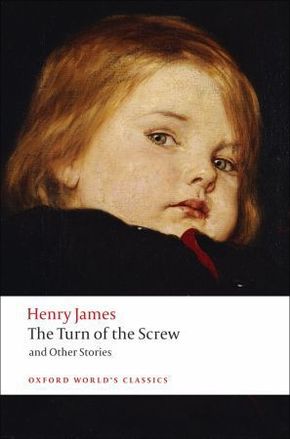
The Turn Of The Screw And Other Stories - Ed., Introduction and Notes by T. J. Lustig
| Verlag | Oxford University Press |
| Auflage | 2008 |
| Seiten | 336 |
| Format | 12,8 x 19,6 x 1,6 cm |
| Print PDF | |
| Gewicht | 236 g |
| Artikeltyp | Englisches Buch |
| Reihe | Oxford World's Classics |
| ISBN-10 | 0199536171 |
| EAN | 9780199536177 |
| Bestell-Nr | 19953617EA |
A young, inexperienced governess is charged with the care of Miles and Flora, two small children abandoned by their uncle at his grand country house. She sees the figure of an unknown man on the tower and his face at the window. It is Peter Quint, the master's dissolute valet, and he has come for little Miles. But Peter Quint is dead.
Like the other tales collected here - `Sir Edmund Orme', `Owen Wingrave', and `The Friends of the Friends' - `The Turn of the Screw' is to all immediate appearances a ghost story. But are the appearances what they seem? Is what appears to the governess a ghost or a hallucination? Who else sees what she sees? The reader may wonder whether the children are victims of corruption from beyond the grave, or victims of the governess's `infernal imagination', which torments but also entrals her?
`The Turn of the Screw' is probably the most famous, certainly the most eerily equivocal, of all ghostly tales. Is it a subtle, self-conscious expl oration of the haunted house of Victorian culture, filled with echoes of sexual and social unease? Or is it simply, `the most hopelessly evil story that we have ever read'?
The texts are those of the New York Edition, with a new Introduction and Notes.
A young, inexperienced governess is charged with the care of Miles and Flora, two small children abandoned by their uncle at his grand country house. She sees the figure of an unknown man on the tower and his face at the window. It is Peter Quint, the master's dissolute valet, and he has come for little Miles. But Peter Quint is dead.
Like the other tales collected here - `Sir Edmund Orme', `Owen Wingrave', and `The Friends of the Friends' - `The Turn of the Screw' is to all immediate appearances a ghost story. But are the appearances what they seem? Is what appears to the governess a ghost or a hallucination? Who else sees what she sees? The reader may wonder whether the children are victims of corruption from beyond the grave, or victims of the governess's `infernal imagination', which torments but also entrals her?
`The Turn of the Screw' is probably the most famous, certainly the most eerily equivocal, of all ghostly tales. Is it a subtle, self-conscious expl oration of the haunted house of Victorian culture, filled with echoes of sexual and social unease? Or is it simply, `the most hopelessly evil story that we have ever read'?
The texts are those of the New York Edition, with a new Introduction and Notes.
ABOUT THE SERIES: For over 100 years Oxford World's Classics has made available the widest range of literature from around the globe. Each affordable volume reflects Oxford's commitment to scholarship, providing the most accurate text plus a wealth of other valuable features, including expert introductions by leading authorities, helpful notes to clarify the text, up-to-date bibliographies for further study, and much more.
Inhaltsverzeichnis:
Introduction
Notes on the texts
Further reading
Chronology
Prefaces by Henry James
Sir Edmund Orme
Owen Wingrave
The Friends of the Friends
The Turn of the Screw
Appendix: from James's Notebooks
Notes
Variant readings
